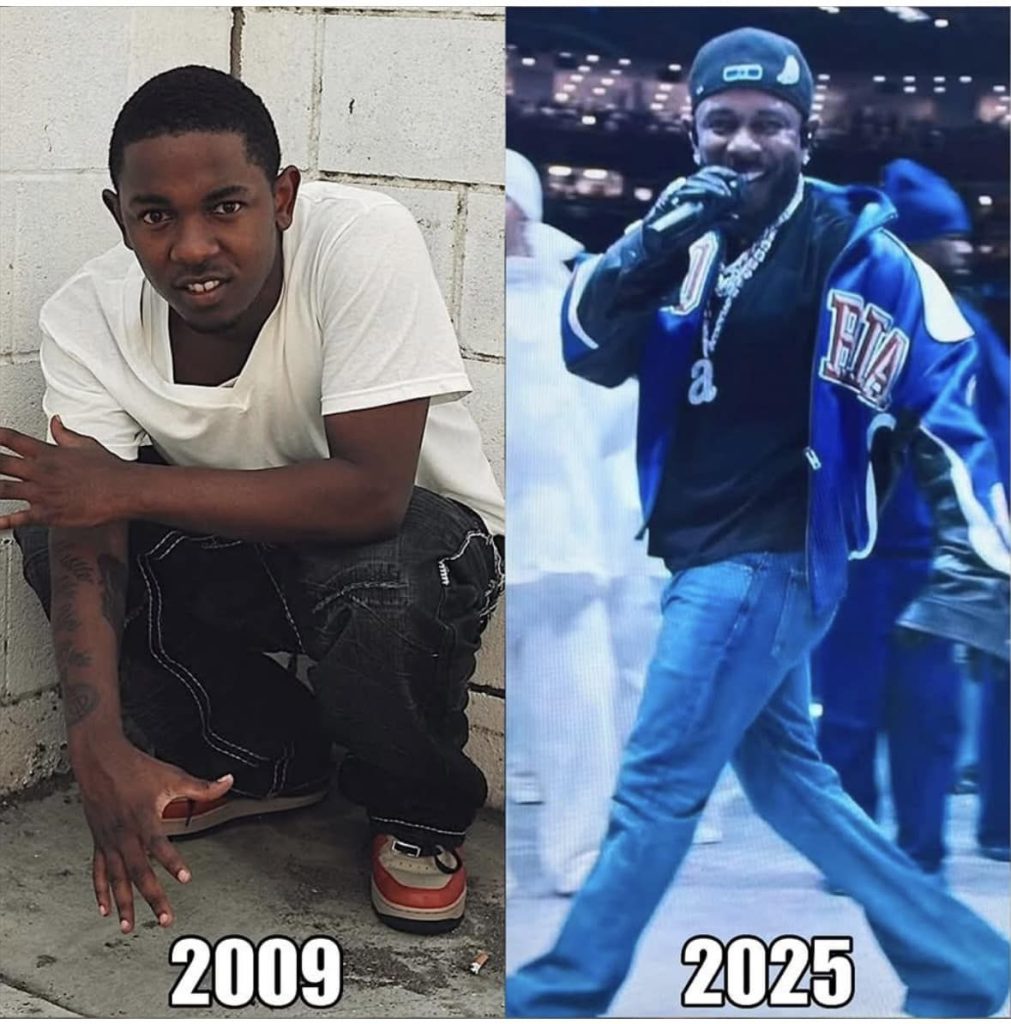The Rise of Kendrick Lamar: From a 13-Year-Old Lyricist to a Hip-Hop Icon
Humble Beginnings in Compton
Before Kendrick Lamar became one of the most celebrated rappers in hip-hop history, he was just a kid from Compton, California, with a passion for words and rhythm. Born on June 17, 1987, as Kendrick Duckworth, he grew up in a city known for its vibrant but often turbulent rap scene. Compton had already given the world legendary hip-hop acts like N.W.A., Dr. Dre, and The Game, and young Kendrick was deeply influenced by the music and culture surrounding him.
Despite being raised in an area where gang culture was prevalent, Kendrick’s parents instilled in him strong values, encouraging him to focus on education and creativity rather than falling into the cycle of street violence. He attended Centennial High School in Compton, where he was known as a quiet, observant student who excelled in English and writing—two skills that would later shape his career.
Discovering a Passion for Rapping at 13
At just 13 years old, Kendrick discovered his talent for rapping. Inspired by Tupac Shakur, Jay-Z, Nas, and Eminem, he started writing rhymes in his notebook, experimenting with different flows and storytelling techniques. Unlike many young rappers who focused solely on flashy lyrics, Kendrick’s early verses reflected a deep understanding of life in Compton, touching on themes of struggle, survival, and ambition.
It wasn’t long before he adopted the stage name “K-Dot” and began recording his own music. His first home recordings were rough, but they showcased his incredible potential. While other kids were playing sports or hanging out after school, Kendrick was in his room, perfecting his craft and studying the greats of hip-hop.
The First Mixtape: ‘Youngest Head Nigga in Charge’
At the age of 16, Kendrick took a huge leap in his career by releasing his first mixtape, Youngest Head Nigga in Charge (Hub City Threat: Minor of the Year) in 2003. The project was recorded independently, but its raw energy and lyrical depth caught the attention of local hip-hop heads.
The mixtape showcased Kendrick’s ability to blend intricate wordplay with vivid storytelling, setting him apart from other young rappers in the underground scene. His music wasn’t just about flexing; it carried a message—one that resonated with people who lived through the struggles he rapped about.
His talent didn’t go unnoticed. The mixtape gained the attention of Top Dawg Entertainment (TDE), an independent record label in California looking to sign promising young artists. TDE’s founder, Anthony “Top Dawg” Tiffith, saw something special in Kendrick and decided to bring him on board.
Joining Top Dawg Entertainment and Earning Respect
After signing with TDE, Kendrick worked relentlessly to refine his skills. He spent hours in the studio, writing and recording new music, often staying up all night to perfect his verses. Unlike many young artists who chase instant fame, Kendrick took his time to develop his unique voice.
As K-Dot, he released his second mixtape, Training Day, in 2005, further proving his lyrical abilities. The project was heavily influenced by East Coast rap styles, featuring rapid-fire flows and complex rhyme schemes reminiscent of Nas and Jay-Z.
During this time, he also gained the respect of established West Coast artists. In 2009, Kendrick appeared in a short clip freestyling alongside The Game, solidifying his presence in the rap scene. His talent was undeniable, and it was only a matter of time before the world took notice.
Dropping the “K-Dot” Name and Becoming Kendrick Lamar
In 2010, Kendrick made a bold move—he dropped the “K-Dot” moniker and started using his real name, Kendrick Lamar. This decision marked a new chapter in his career, signaling a shift from being just another talented rapper to becoming a true artist with a vision.
That same year, he released Overly Dedicated, a mixtape that showcased his growth and maturity as a rapper. Songs like “Ignorance Is Bliss” and “P&P” highlighted his introspective storytelling, tackling issues like gang violence, self-reflection, and the struggles of young Black men in America.
The project was a critical success and caught the attention of Dr. Dre, one of hip-hop’s biggest legends. Recognizing Kendrick’s potential, Dr. Dre took him under his wing, eventually signing him to Aftermath Entertainment in 2012.
The Breakthrough: ‘Section.80’ and ‘good kid, m.A.A.d city’
Before Kendrick’s mainstream breakthrough, he released his independent album Section.80 in 2011. The project was deeply conceptual, telling stories of marginalized youth and the struggles of growing up in urban America. Songs like “HiiiPoWeR” and “A.D.H.D.” demonstrated his ability to mix social commentary with incredible lyricism.
The album gained widespread acclaim, and by the time he released his major-label debut, good kid, m.A.A.d city, in 2012, Kendrick Lamar was already a star. The album, a cinematic masterpiece, told the story of his upbringing in Compton and solidified him as one of the most important voices in modern hip-hop.
From a 13-Year-Old Dreamer to a Pulitzer Prize Winner
Kendrick’s journey from a 13-year-old aspiring rapper to a global icon is nothing short of inspirational. His ability to blend powerful storytelling, social consciousness, and unmatched lyrical skill has earned him multiple Grammy Awards, a Pulitzer Prize for Music (for DAMN.), and the respect of artists across generations.
But at the heart of it all, Kendrick Lamar remains that same kid from Compton—observing, learning, and using his voice to tell the stories that matter. His success is proof that dedication, authenticity, and a commitment to artistry can take you from rapping in your bedroom to changing the world.


